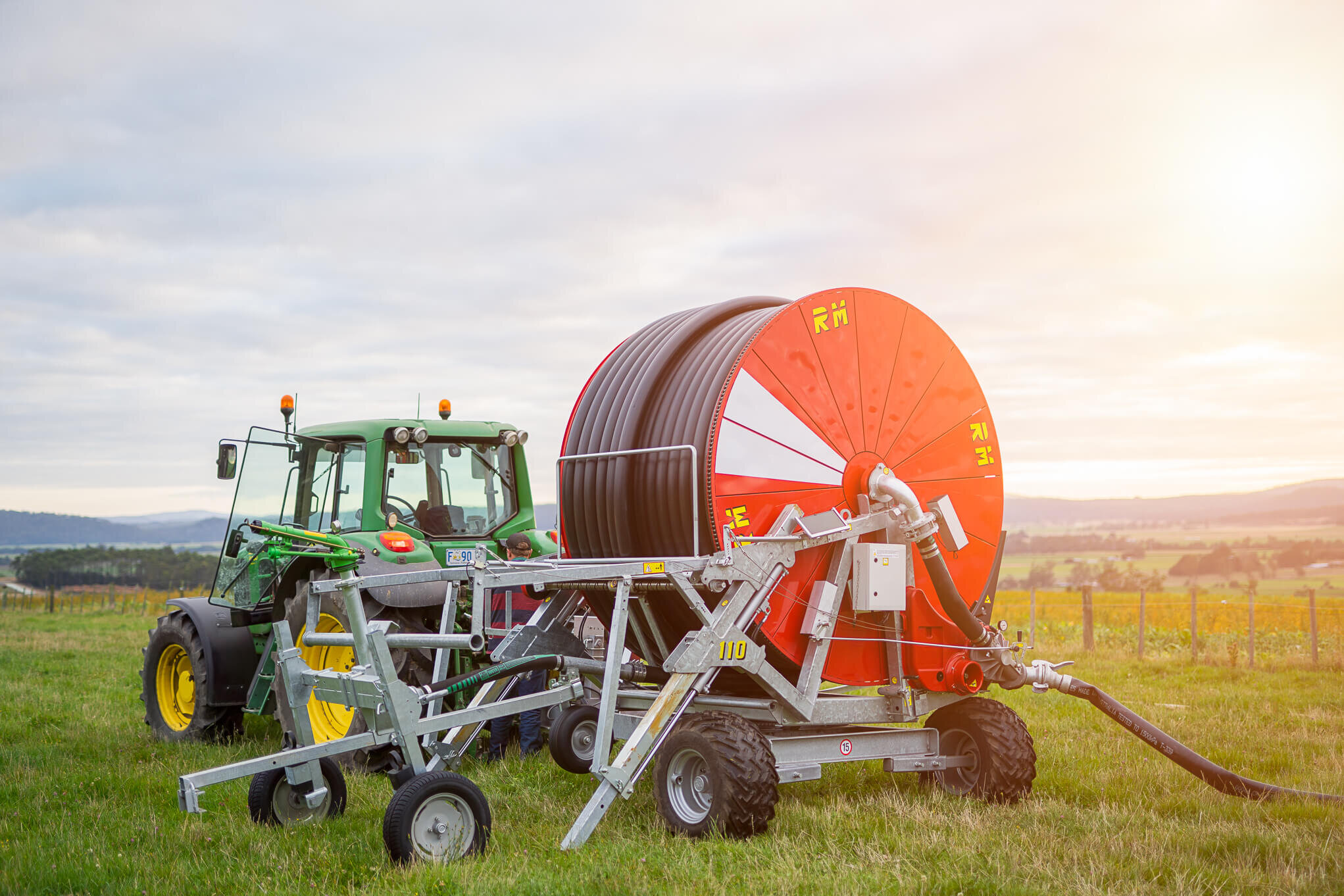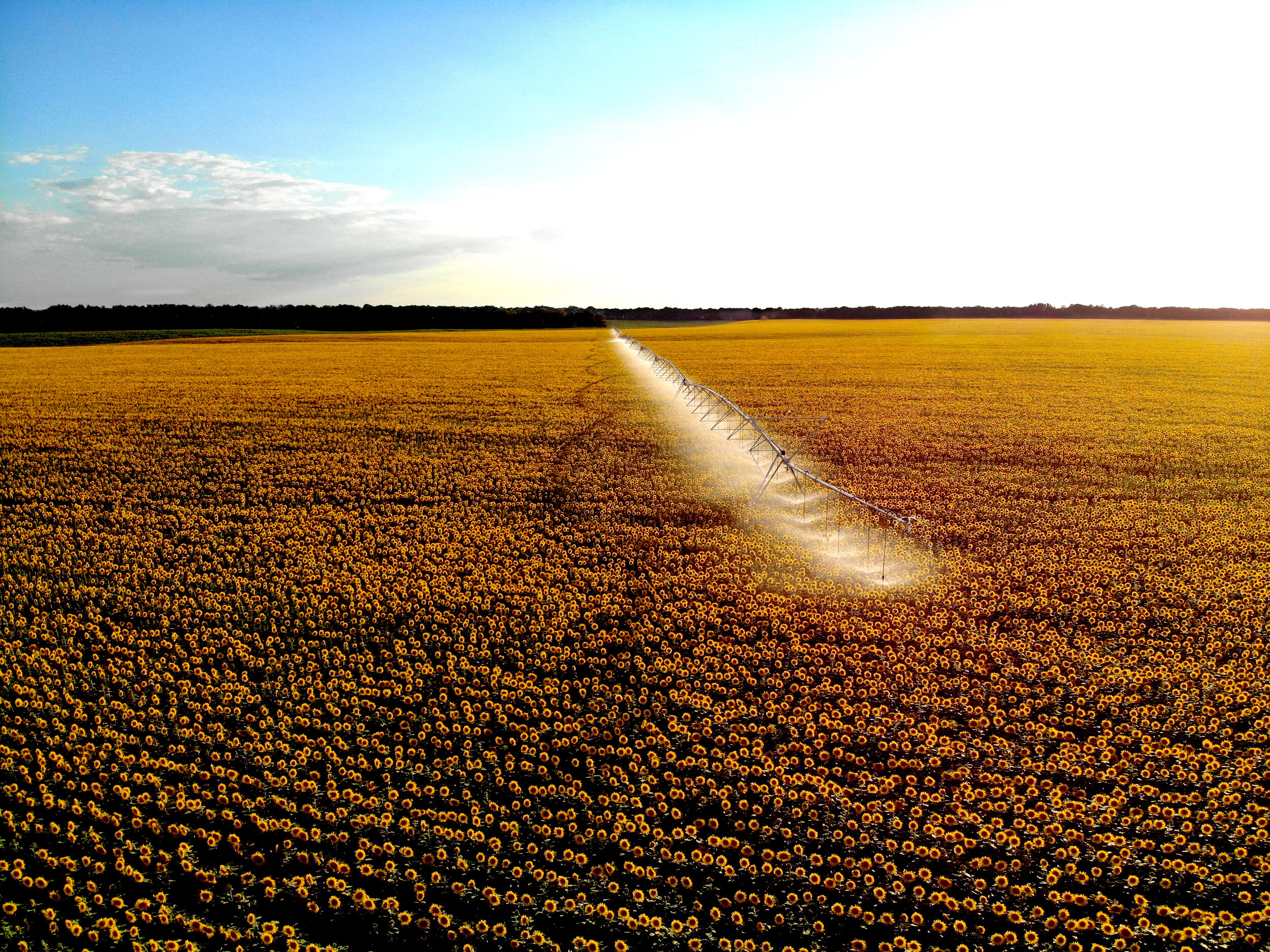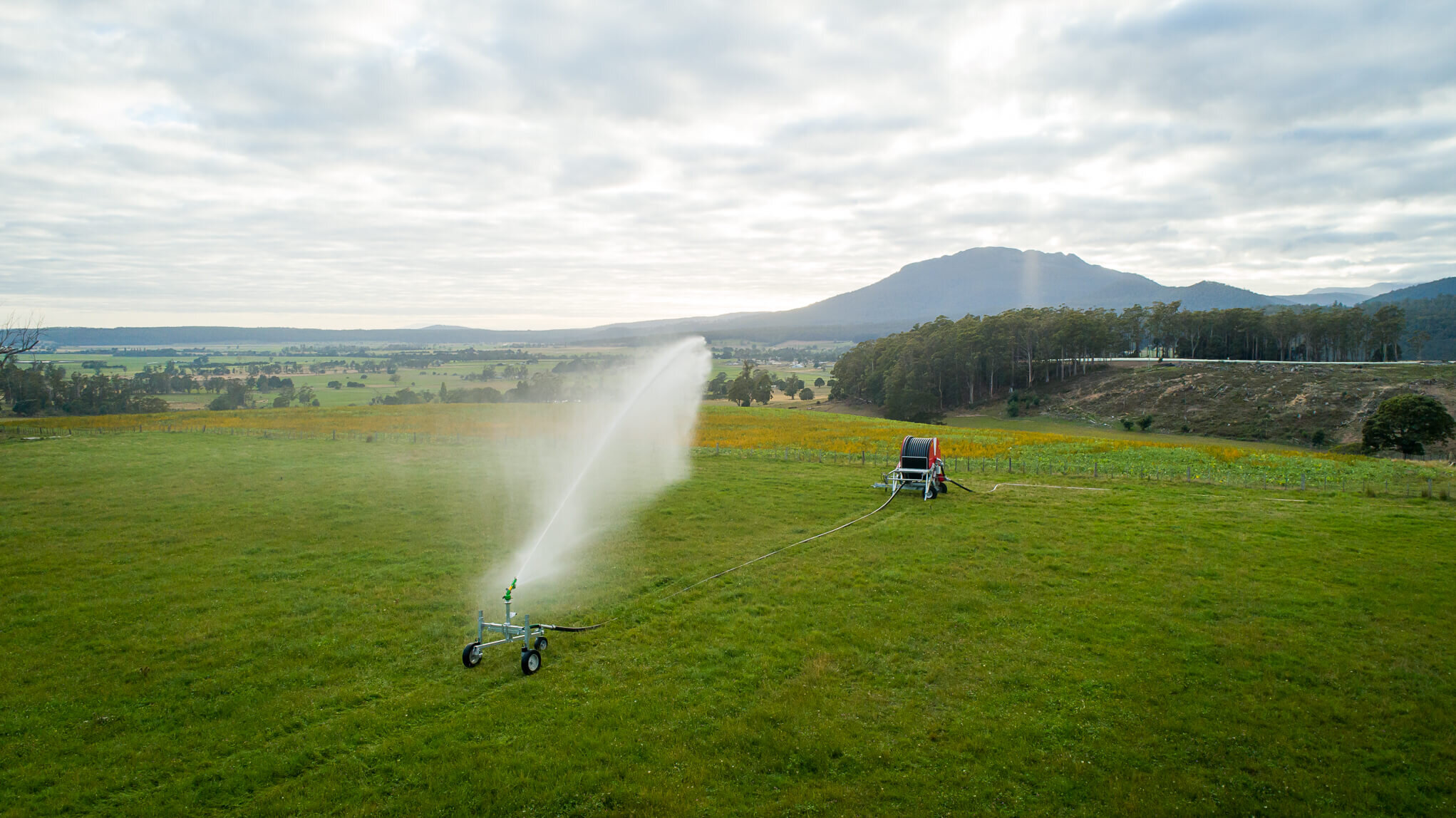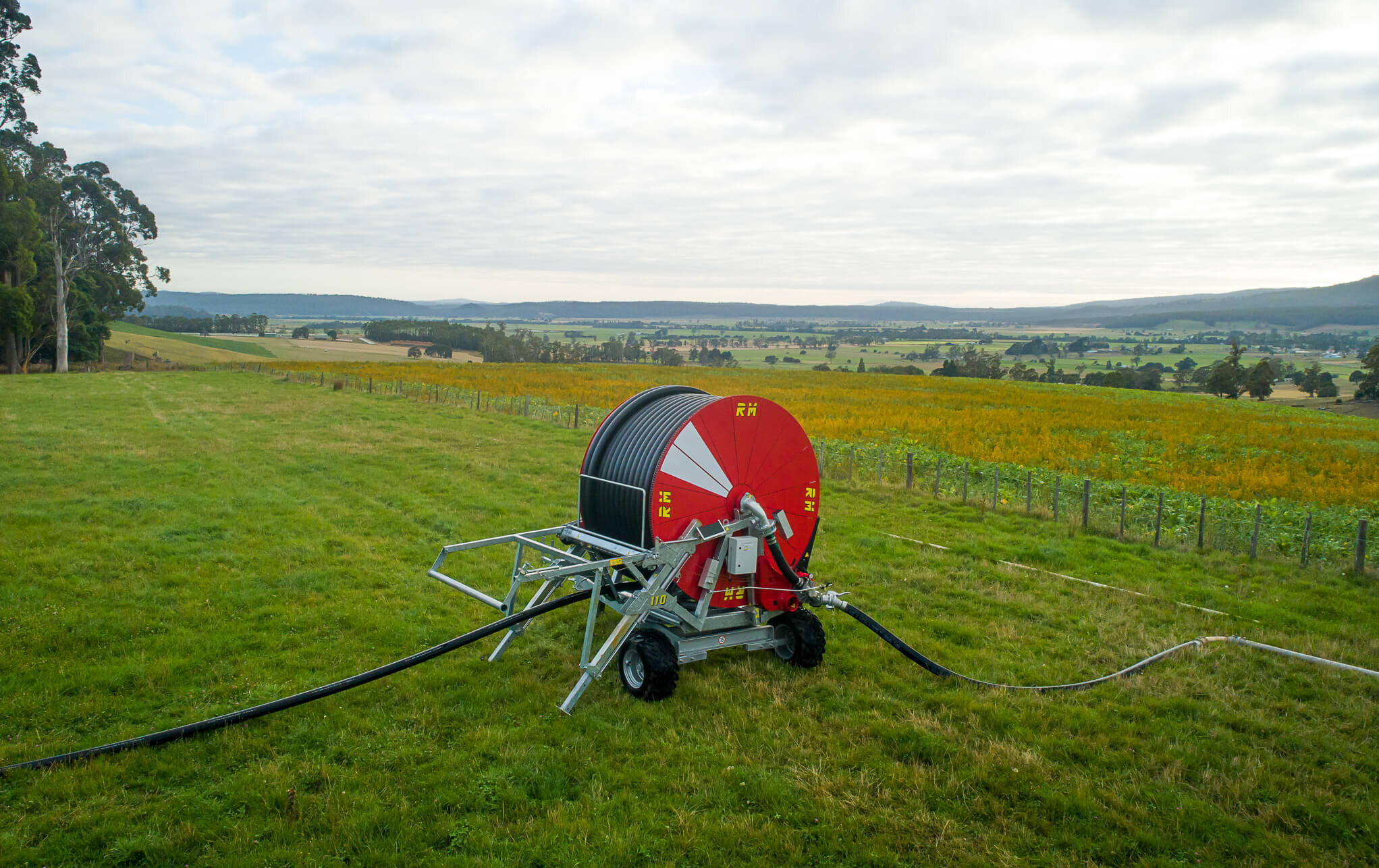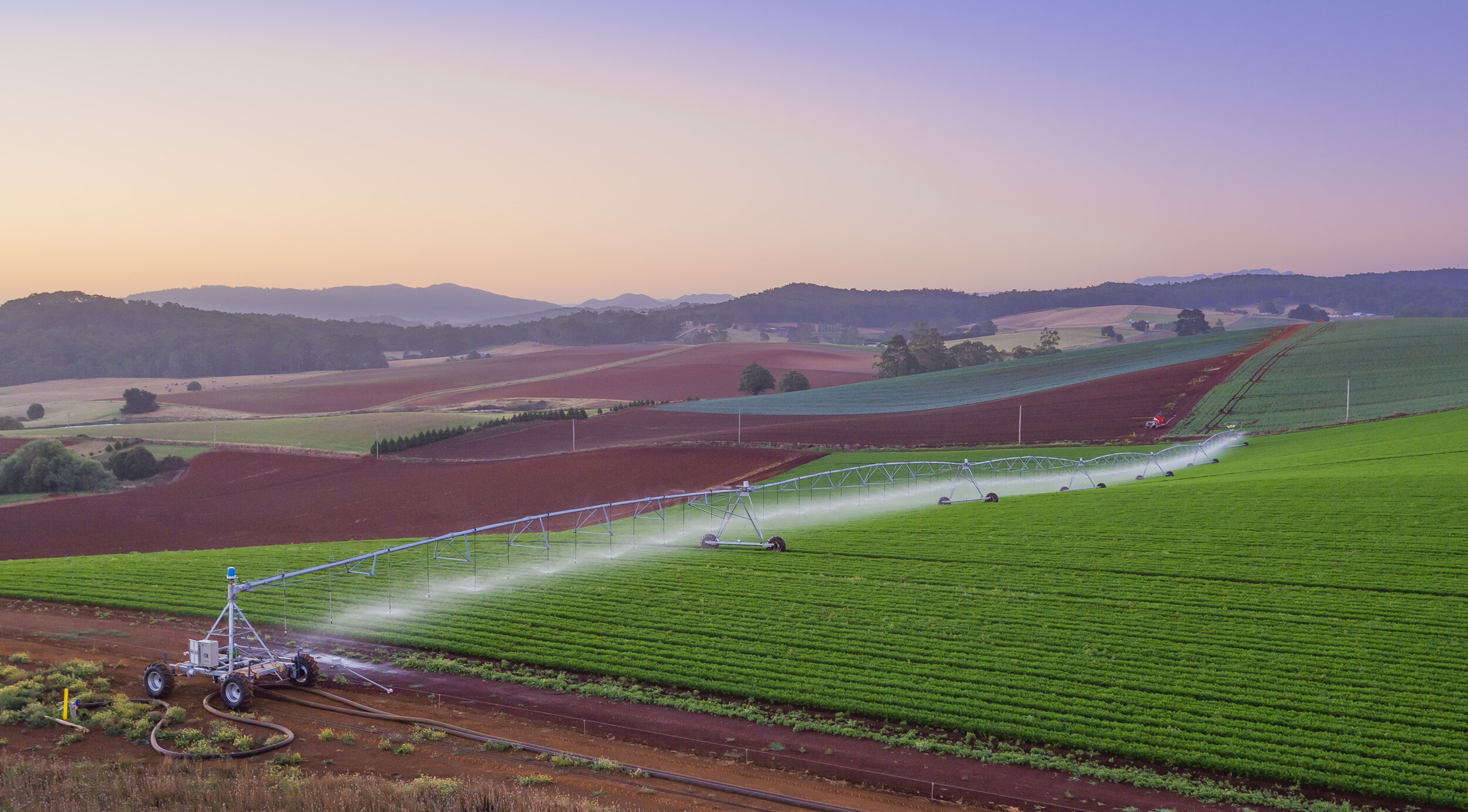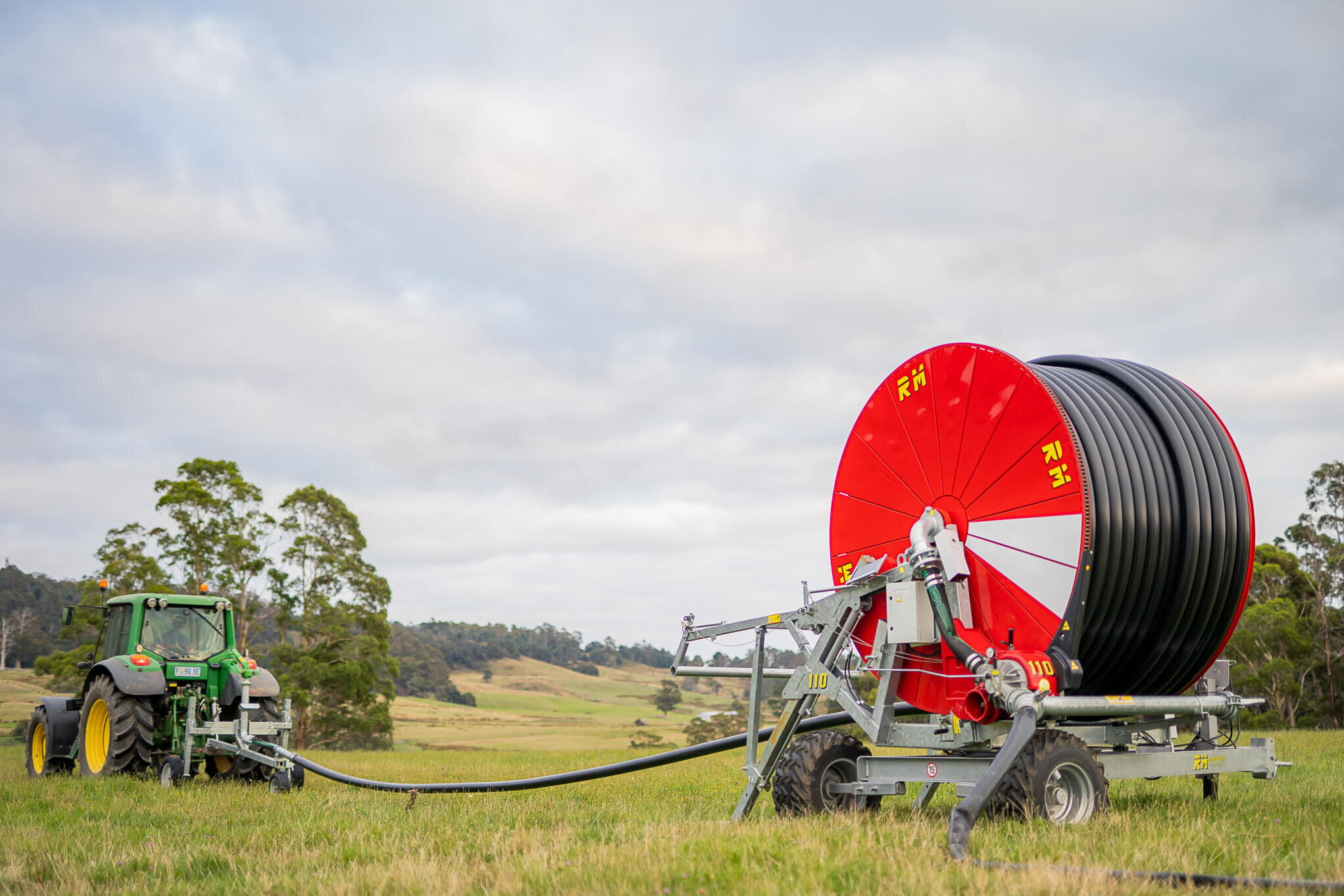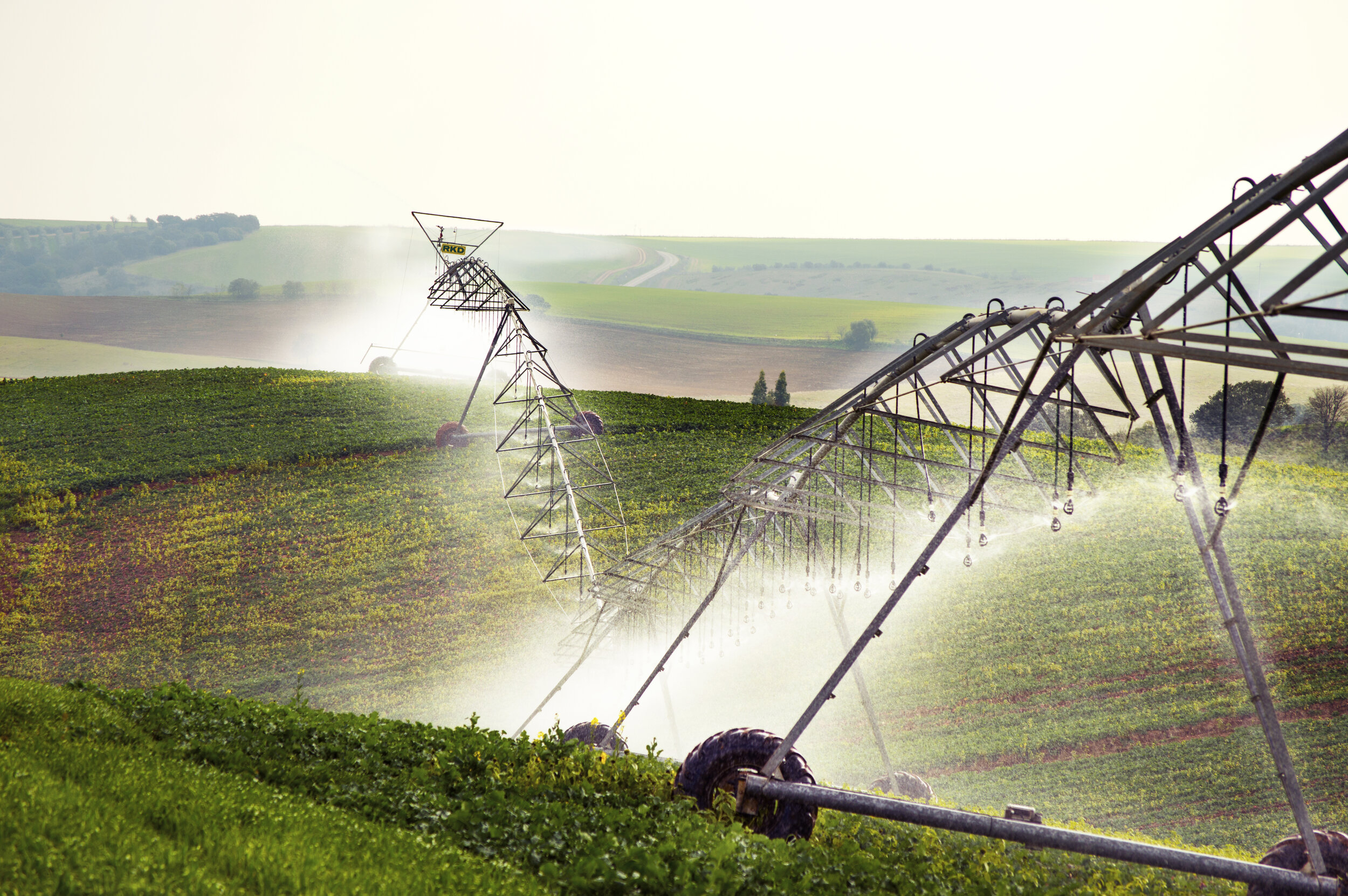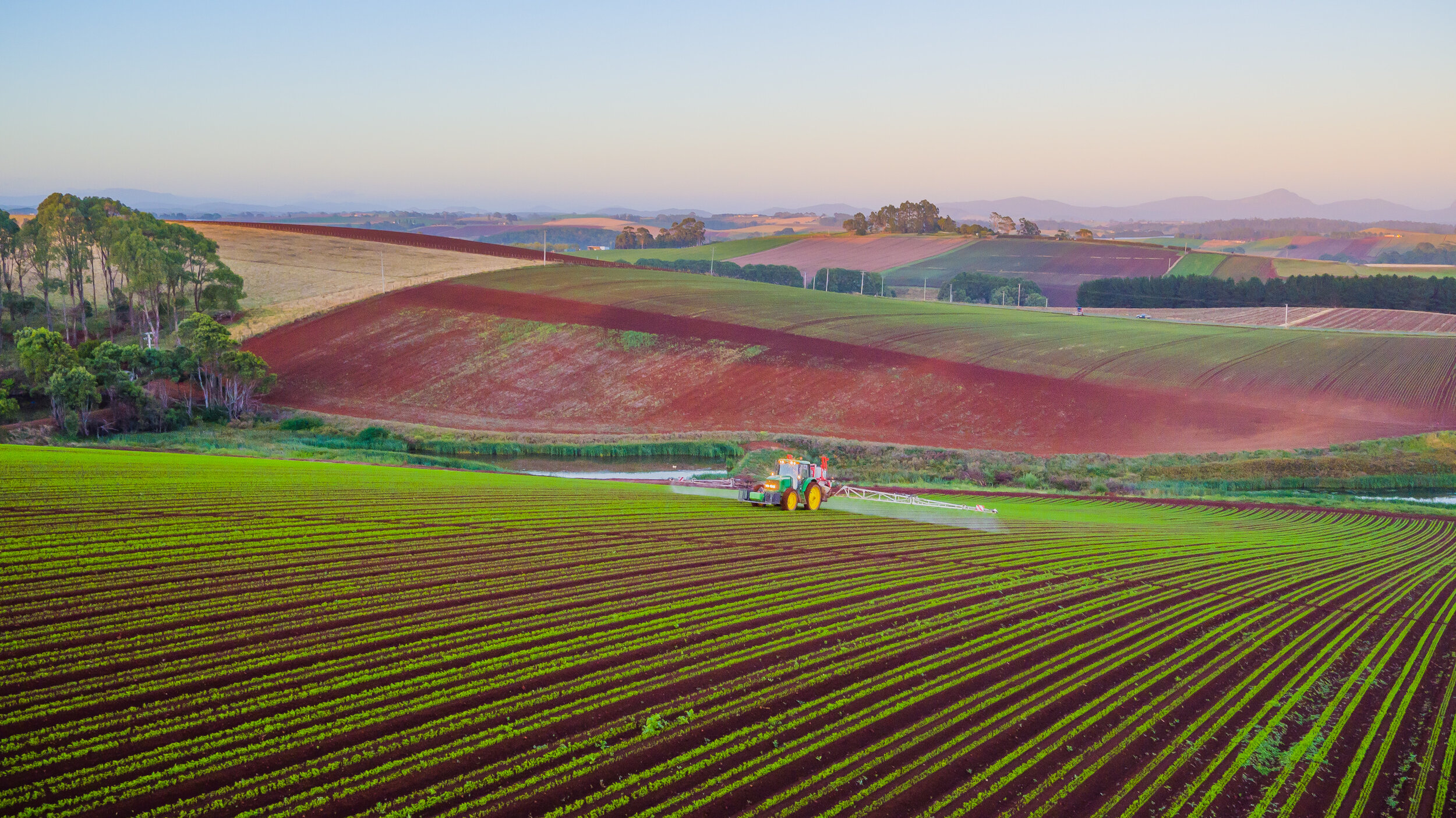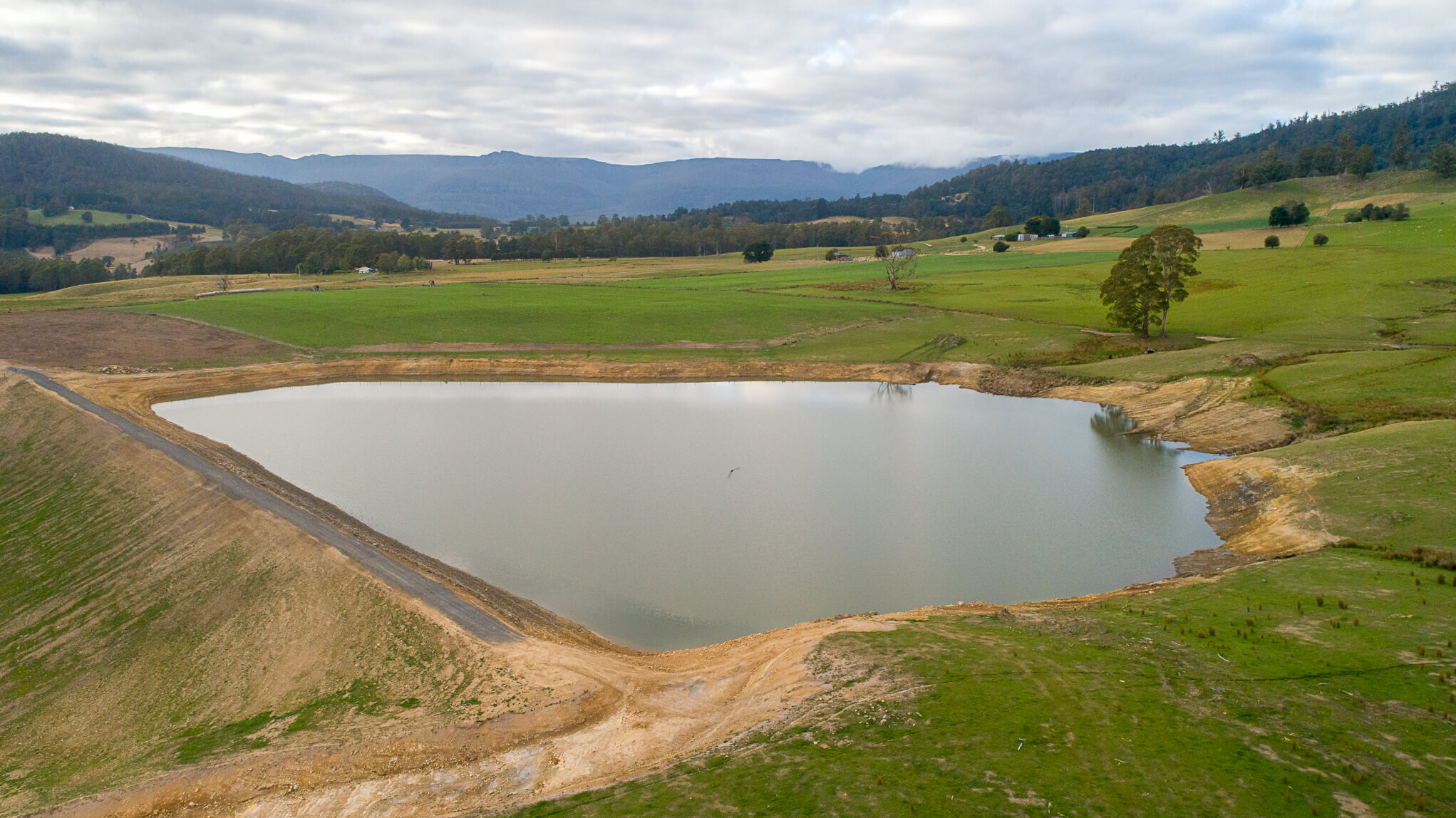Indicators to watch for efficient irrigation
Published in the TasCountry on the 7th July 2020
The amount of water that you need will depends on the crop you are growing, whether you are farming in the hotter and dryer areas or the cooler, wetter districts, and will vary from season to season. The time of planting is also an important influencing factor.
Approximate seasonal water requirements for common annual crops.
The table shows for planting purposes the total volume of irrigation water required over a season for common Tasmanian crops. Water requirements are expresses in millimetres (mm) and mega-litres (ML) per hectare. One mega-litre equals 100mm applied over one hectare.
So with this range of factors to consider, how do you know you have your irrigation schedule right?
There are a few simple rules of thumb that can point you in the right direction and ensure you get that bumper crop.
Average daily evaporation (mm/day) for each month in Tasmania
In general terms, crops such as potatoes, carrots, onions, and poppies, that require intense irrigation, need an irrigation volume approximately equal to evaporation and plant transpiration losses, which are usually referred to as evapotranspiration (ET).
The above table shows long-term average evaporation for 5 different locations in Tasmania.
Actual values can vary considerably each day. To see current data for your area visit http://www.bom.gov.au/watl/eto/.
Crop irrigation requirements can be calculated from evaporation multiplied by a crop factor but also taking into account the amount of crop cover over the soil surface. Total ET for a season equates to ET per week multiplied by the number of weeks the crop is at full leaf cover.
For example, the total irrigation requirement for potatoes (14 weeks full canopy) at 28 mm ET per week (4 mm per day) = 4 ML/ha.
Traveling gun irrigators like the RM will meet this requirement through one high volume 35–45 mm irrigation on a 7 to 10-day interval. Centre pivot irrigators, RKD pivots, or 2iE linears (or laterals) are often programmed to apply lower volumes more frequently.
The water used on a daily basis, as calculated from the evaporation rate for your area, and the amount of Readily Available Water in the effective root zone determines the irrigation interval.
The higher the RAW value the less frequent irrigation needs to be as the plant has greater access to water.
Additionally, the higher the daily evapotranspiration the more frequent irrigation needs to be as more water is lost, therefore it must be supplemented to the crop to ensure the plants growth is not strained.
Therefore, it is important to have a system that is expertly designed. Many past systems have been ‘under-designed’ with a focus on minimising capital costs and have not been able to meet peak crop water demands.
The system capacity of the machine is the rate at which water can be supplied to the irrigated area expressed in mm/day. If the system capacity is too low the irrigator will not be able to supply enough water during periods of hot weather and this can result in crop stress and yield reduction.
A good design will supply a system capacity that ensures crop water requirements can be met even under extreme climatic conditions. The payback of a well-designed quality system should be twofold, in the reduction of ongoing running costs and the potential yield and quality gains by not under-watering your crop.





